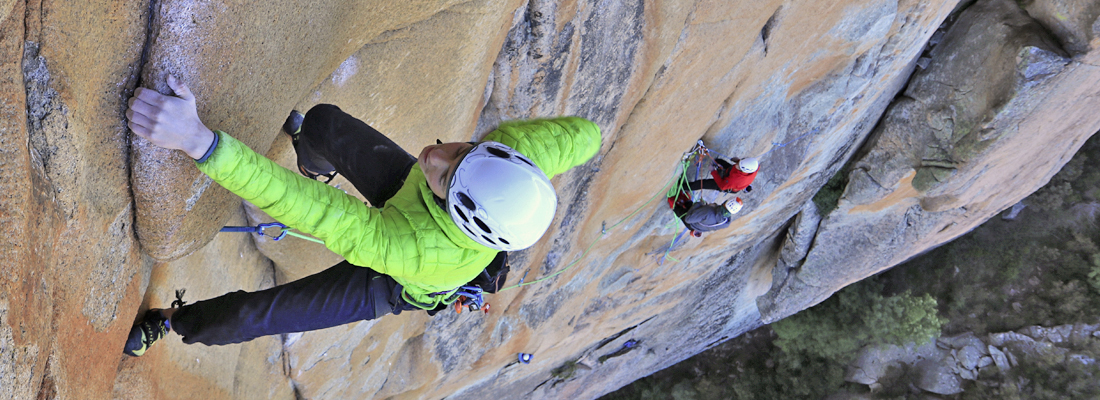She fell over 90 meters and should've had no chance at survival.

The rope slipped and she plummeted down to the rocks below. Image Credit: Photobac/Shutterstock.com
Plummeting 91 meters (300 feet) and landing on solid rock is generally not conducive to survival. Against all odds, however, one climber survived the “unsurvivable” after a rope slid through her harness and she entered freefall downwards, escaping with severe but non-fatal injuries. Scientists then tried to understand just how she managed it.
As described in a case report from 2011, a 28-year-old woman was climbing with her boyfriend on a day just like any other. With 20 years of climbing experience under their belt, the woman was no stranger to scaling large rock faces, and both of them were wearing safety harnesses and helmets. The ascent in question was three separate 100-foot (30.5-meter) faces and the couple was almost done with the climb, with the woman securing an anchor at the 300-foot (91-meter) mark that would secure them to the wall.
However, the rope had no security knot and slipped through the harness, causing the woman to fall off of the face and plummet 200 feet (61 meters) vertically down to the rocks below, which she impacted and then fell another 100 feet (30.5 meters) before landing. The impact is estimated to have been at around 120.7-128.7 kilometers per hour (75-80 miles per hour) – for reference, pedestrians have a minimal chance of survival when impacted by a car going just 69 kmph (43 mph).
Her boyfriend watched the entire thing and scrambled down to help her. She was awake but unresponsive and in obvious pain, and first aid was administered until first responders got there, who intubated the woman. She was transported to a hospital and resuscitated, where the extent of her injuries became apparent.
The climber had a traumatic brain injury, blunt trauma to internal organs, multiple rib fractures, fractures to the femur and pelvis, among many others. Regardless, she was alive against all odds.
Despite the brain injury and spinal cord damage resulting in neurological problems and paraplegia, extensive rehabilitation and invasive surgeries led to an excellent recovery. The woman was left with essentially normal brain function and continued rehabilitation to increase the weight-bearing of her lower extremities, a marked improvement over the lack of sensation she originally had below the spinal cord injury.
So, how did she survive? By all accounts and previous cases, she absolutely should not have. The researchers identified that the body position she landed with may have blunted the impact, allowing enough force to be reduced to prevent any instantly fatal injuries. The team called falling feet-first and then rolling backward the “ideal” body position to land from a large fall, attempting to cushion the head and chest from as much impact as possible. The large surface area of her femur, pelvis, and then back resulted in the most possible deceleration before reaching the vitals in the chest, which the team believe saved her from immediate death. Perhaps obviously, if the woman had landed head or neck first, she would not have survived.
Coupled with the immediate first aid and rapid response from emergency services, this woman survived a drop previously thought impossible.
So, there you have it. If you happen to be falling from an “unsurvivable” height, there may be a tiny hope if you land the absolute perfect way – it’s about as slim a chance as they come, though.




Recommended Comments
There are no comments to display.
Join the conversation
You can post now and register later. If you have an account, sign in now to post with your account.
Note: Your post will require moderator approval before it will be visible.